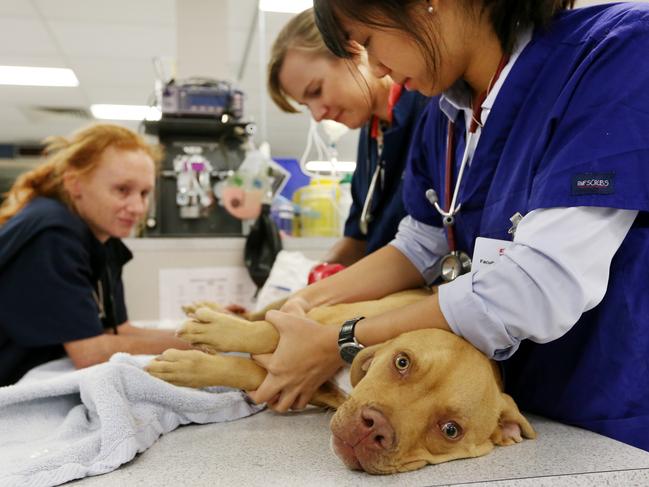Poisons getting Tasmania’s naughtiest dog breeds into trouble
Australia’s 10 naughtiest dog breeds have been revealed, and they’re putting their lives at risk by chowing down on poisonous nasties. See what they are and get expert tips on how to protect your pooch.

Tasmania
Don't miss out on the headlines from Tasmania. Followed categories will be added to My News.
Exclusive: Labrador Retrievers are the state’s naughtiest dogs, risking their health by eating poisonous nasties, new data shows.
The Animal Poisons Helpline found the breed accounted for more than one in ten poisoning calls from January to August, followed by Border Collies (7 per cent of calls) and Australian Kelpies (5.1 per cent).
Rounding off the top 10 were Staffordshire Bull Terriers (4.7 per cent), American Staffordshire Terriers (4 per cent), Miniature Dachshund (3.9 per cent), German Shepherds (3.6 per cent), French Bulldogs (3.4 per cent), Golden Retrievers (3.2 per cent), and Jack Russell Terriers (3 per cent).
Cross-breeds were not included in the data set.

It has prompted a warning to Tasmanians to poison-proof their homes to ensure the curiosity of our four-legged friends doesn’t get the better of them.
Brodifacoum, the active ingredient in rodent baits, was the most common toxin, involved in more than 8 per cent of calls to the Helpline.
More than 5 per cent of dogs fell victim to chocolate, while 3.3 per cent were poisoned by Fipronil — an insecticide found in some tick and flea control products for pets, and usually present in ant and cockroach treatments
Fertiliser (3.2 per cent), and fungi (3 per cent) were also among the top five toxins.
Director and vet at North Hobart Veterinary Hospital, Dr Jennifer Cormack, said brodifacoum, which can cause internal bleeding if ingested, and chocolate were major concerns. Some types of fungi, in particular mould that may grow in bins or on composted waste, could be dangerous and even fatal.
Fertiliser, which dogs loved because of its “disgusting smell”, could cause “awful” gastrointestinal issues if enough was eaten.
Dr Cormack said she hadn’t encountered any Fipronil poisonings in her clinic, but if it was consumed orally it may cause local irritation in the mouth that could deter them from eating or drinking.
She said many of the dog breeds were food-driven which could lead them to hoover up things they shouldn’t, but added the popularity of them could also explain why they were mentioned more frequently in calls for poisons advice.

Nick Merwood, a Specialist in Poisons Information at the Australian Animal Poisons Helpline, said some of the breeds listed were “prone to diseases that make them feel hungry, such as diabetes, and therefore are more likely to seek out food”.
“Some of the breeds are also more likely to have a condition that requires medication that increases appetite as a side effect, such as phenobarbitone for epilepsy or prednisolone for allergic skin disease and auto-immune conditions,” Mr Merwood said.
Your Vet Online CEO and Chief Veterinarian, Leigh Davidson, agreed that some pet medications increased appetite and that it was something she brought to her clients’ attention, but often it was dogs’ curiosity that got them into trouble.
This meant it was important dog owners poison-proofed their homes.
“Put poisons like rodent and snail baits, human medications and cleaning sprays in a cupboard; preferably a cupboard that you can securely close because dogs will try and get into them,” Dr Davidson said.
“You should also consider removing dangerous garden plants. Yesterday Today Tomorrow (brunfelsia spp) can cause seizures and tremors if eaten. I also wouldn’t have Sago Palms in my backyard.
“If you are going to lay any baits, try and shield them from your dogs.”
Originally published as Poisons getting Tasmania’s naughtiest dog breeds into trouble
